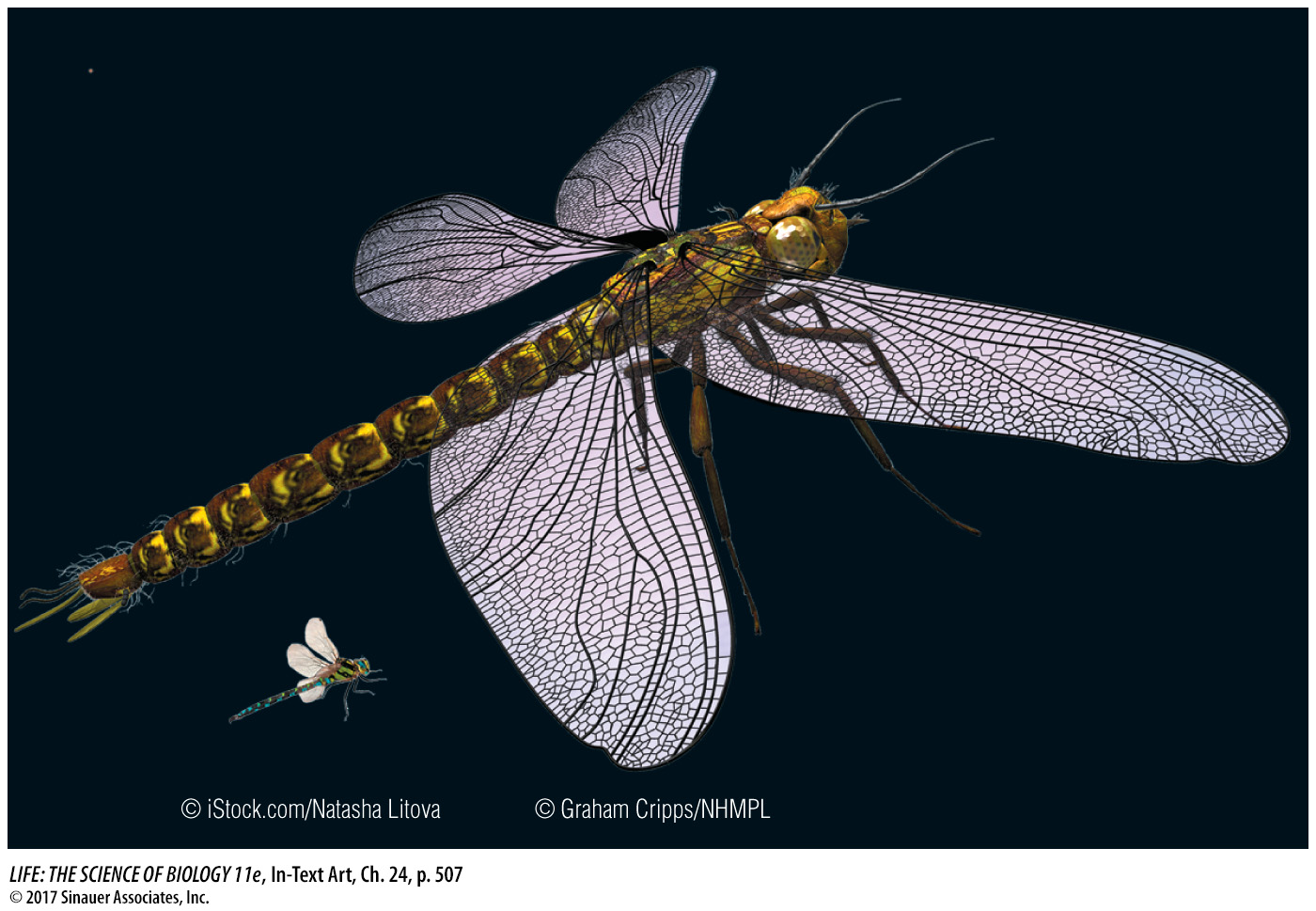Chapter Introduction
The History of
Life on Earth

investigating life
When Giant Insects Ruled the Skies
The largest dragonflies alive today have wingspans that can be covered by a human hand. Three hundred million years ago, however, dragonflies such as Meganeuropsis permiana had wingspans of more than 70 centimeters—
No flying insects alive today are anywhere near this size. But during the Carboniferous and Permian geological periods, 350 to 250 million years ago, many groups of flying insects contained gigantic species. Meganeuropsis probably ate huge mayflies and other giant flying insects that shared its home in the Permian swamps. These enormous insects were themselves eaten by giant amphibians. None of these insects or amphibians would be able to survive on Earth today. The oxygen concentrations in Earth’s atmosphere were about 50 percent higher then than they are now, and those high oxygen concentrations are thought to have been necessary to support giant insects and their huge amphibian predators.

Paleontologists have uncovered fossils of Meganeuropsis permiana in the rocks of Kansas. How do we know the age of these fossils, and how can we know how much oxygen that long-
Scientists have developed sophisticated techniques that use the decay rates of radioisotopes, the ratios of certain molecules in rocks, and changes in Earth’s magnetic field to infer conditions and events in the remote past and to date them accurately. It is those methods that allow us to age the fossils of Meganeuropsis and to calculate the concentration of oxygen in Earth’s atmosphere at the time.
Earth is about 4.5 billion years old, and life has existed on it for about 3.8 billion of those years. That means human civilizations have occupied Earth for less than 0.0003 percent of the history of life. Discovering what happened before humans were around is an ongoing and exciting area of science.
How can modern experiments test hypotheses about the evolutionary impact of ancient environmental changes?